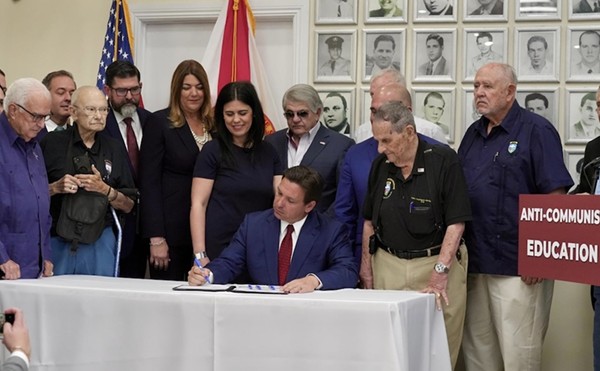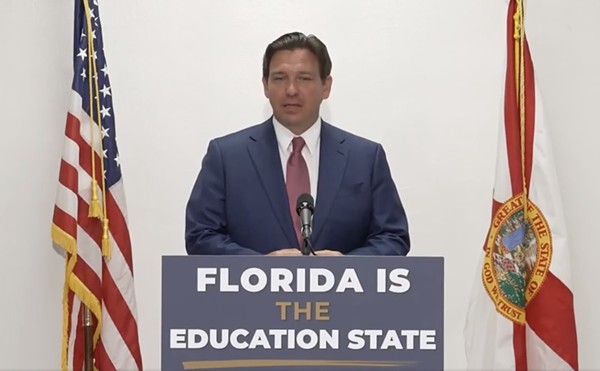Child development can be fairly predictable. At age 3, children insist on doing things by themselves. At 4, they love to mix fantasy with reality. At 5, they like investigating things. Understanding this emotional development is essential if your goal is to make money selling products to children – and their parents. That's why marketers spend billions of dollars each year observing children and their purchasing behavior.
Some of the biggest names in marketing to children gathered for the Kid Power 2005 Conference, May 10-13 at Disney's Yacht & Beach Club. Attendees of the convention paid up to $4,000 each to attend the show. On May 12, more than 100 marketing executives sat shoulder-to-shoulder in a small conference room, anxious to learn how to make their brands more attractive to a young audience. There wasn't an empty seat in the house.
At the podium, National Football League marketing director Scott Lancaster was in front of a large projector screen. His seminar, "Making Your Brand Kid-Cool and Mom Acceptable," was one of over 40 aimed at fine-tuning the science of marketing to children, an exercise that has been inciting controversy for over 20 years.
Children are important to the NFL because, according to Lancaster, catching the attention of a kid means better odds of creating an adult football fan with some discretionary income. To illustrate the point, Lancaster listed techniques used by the NFL to immerse children in football, including a partnership with the video game corporation EA Sports.
"We knew we weren't going to beat the video game giant `EA Sports.` They were just way too big and way too successful. So we decided to join them," he said. The partnership produced exposure that led to widespread recognition of the NFL brand among kids and teenagers.
"We saw this as a great opportunity to get kids excited about football off the field," he said. But a product can only have limited success if the parents aren't sold too, said Lancaster.
"It's important to create a product that moms will embrace," he said as the crowd scribbled notes. "One of the most radical things we did with our football clinics is we made soccer moms the coaches of tackle football. A lot of times you'll hear a kid say he can't play football because his parents don't approve, or they don't want him to get hurt. By bringing the mother in to coach, we were not only empowering the mothers, we were appealing to the fact that when children reach the ages of between 12 and 14, mothers will want to spend more time with their kids. This is the age when a lot of kids start slipping away to do their own thing. So by involving the mom, we were not only getting parent participation, it's great exposure for the brand."
The three-and-a-half-day Kid Power 2005 conference included seminars on how to market to children with learning disabilities, how to market in the school systems, how to incorporate multicultural messages in advertising, how to turn kid trends into company profits and how to identify attitudes, influences and perceptions that shape kids' purchasing choices. Guest speakers included CEOs, marketing directors and research analysts from some of the top child marketers in the world: DreamWorks, Jive Records, The WB, the National Hockey League, Pepperidge Farms, Warner Bros. Online, Burger King, Reebok, etc. It was the Super Bowl of selling to kids.
Former Coca-Cola chief marketing officer Sergio Zyman set the tone as one of the major keynote speakers. Zyman, who is sought after by companies around the world for his marketing expertise, says marketing is more science than art. The only way to be successful, he says, is to "sell more stuff, to more people, more often, for more money, more efficiently."
Of the dozens of seminars on selling, research, strategies and licensing partnerships, only two explicitly encouraged marketers to exercise caution when advertising to children. One, led by the Children's Advertising Review Unit – the marketing industry's self-regulatory agency – board member Stephanie Yost Cameron, encouraged marketers to avoid deceptive or misleading advertising to children. The other, led by Schwan Food Co. nutrition scientist Hope S. Hale, educated food marketers on the latest child obesity trends and encouraged them to implement a health and wellness culture in their companies.
NOT FOR SALE
Though there was little time devoted to the flip side of making consumers out of young kids at Kid Power, there is no shortage of people critical of the idea that kids equal sales.
Gary Ruskin, director of Commercial Alert, a nonprofit organization that seeks to protect children from commercialism, says conferences like Kid Power should be stopped.
"In general, `the Kid Power conference` is a convocation of corporate predators who are trying to manipulate and take advantage of children `through advertising`," Ruskin says.
Juliet B. Schor, best-selling author and member of the Commercial Alert board of directors, says the huge influx of child-targeted marketing is affecting kids' lifestyles, creating "a generation of couch potato kids, scarfing down chips and soda, driving their parents crazy about those hundred-dollar sneakers."
Schor, a professor at Boston College, has been studying the issue for over 10 years. In her book Born to Buy: The Commercialized Child and the New Consumer Culture, she notes some startling statistics about the power of branding.
According to a 2001 Nickelodeon study, she writes, the average 10-year-old has memorized 300 to 400 brands; 92 percent of 8- to 12-year-olds request brands by name. Schor also found that the United States has a high percentage of children who believe that clothes and brands define their social status among their peers.
"Contemporary American 'tweens' `children between the ages of 8 and 13` and teens have emerged as the most brand-oriented, consumer involved and materialistic generations in history. And they top the list globally," she writes.
As evidenced by Kid Power, marketers go to great lengths to understand children and their behaviors, from videotaping them in their private spaces to observing them on the streets, in stores and in school.
The payoff has been huge, according to James U. McNeal, professor of marketing at Texas A&M and author of The Kids Market: Myths and Realities.
Known as one of the nation's most influential statisticians of the child consumer industry, McNeal found that children between the ages of 4 and 12 have increased spending by 400 percent from 1989 to 2002.
According to McNeal, children spend most of their money (one-third of the total spending) on snacks and beverages. The toy industry is in second place, with $170 billion of personal spending in 2002 – an average of $101 a person. The third most popular item for a kid: apparel.
He estimates that 80 percent of children shop regularly with their parents. Furthermore, he says, kids between the ages of 6 and 12 visit a store two to three times a week, and put an average of six items in their shopping carts each time they go. Because of these statistics, McNeal describes child consumers as "the brightest star in the consumer constellation."
In the United States alone, children under 12 spend $28 billion a year, teenagers spend $100 billion a year and parents spend up to $300 billion annually for their children. McNeal's most staggering statistic: "Tweens" influenced over $1 trillion in spending worldwide in 2002 alone.
And marketers are willing to shell out big bucks for a piece of the action. In 2004, they spent $15 billion on child-targeting advertisements and marketing campaigns.
Getting kids when they're young is one of the core principles for success. Wayne Chilicki, an executive at General Mills, says his company operates under the "cradle to grave" model. "We believe in getting them early and having them for life," he wrote in an article published in Youth Markets Alert.
"Children are consumers in training," writes McNeal. "Anybody can fool them, deceive them or cheat them. It takes a mighty good marketer to satisfy children's wants and needs and not do anything unethical, intentionally or unintentionally."
HANDS OFF
In 1978, the Federal Trade Commission attempted to limit advertising with a proposed ban on ads targeting children under 8, concluding that children are "too young to understand the selling purpose" of advertising. Congress blocked the ban, leading to the revocation of many of the FTC's powers. In 1980, the "FTC Improvements Act" was passed, restricting government oversight or regulation of child advertising. Today, it's actually harder to regulate advertising aimed at kids than at adults.
While the United States only imposes guidelines on responsible advertising for children, some European countries have imposed bans on advertisements directed toward children altogether.
Greece bans televised toy advertisements from 7 a.m. to 10 p.m. Sweden and Norway have banned all advertising directed toward children under age 12. And on May 25, Italy proposed a ban on child advertising as well.
Protecting children from commercialism, says Ruskin, lies solely in the hands of the parents. "It's up to parents and families to defend their children," he says. "But it won't be easy."
Ruskin tells parents to place limits on the amount of television their children are watching, to protest advertising in schools and to get active in politics.
"There is almost nothing that parents could do together that is more important than to make America safe for childhood again."


















